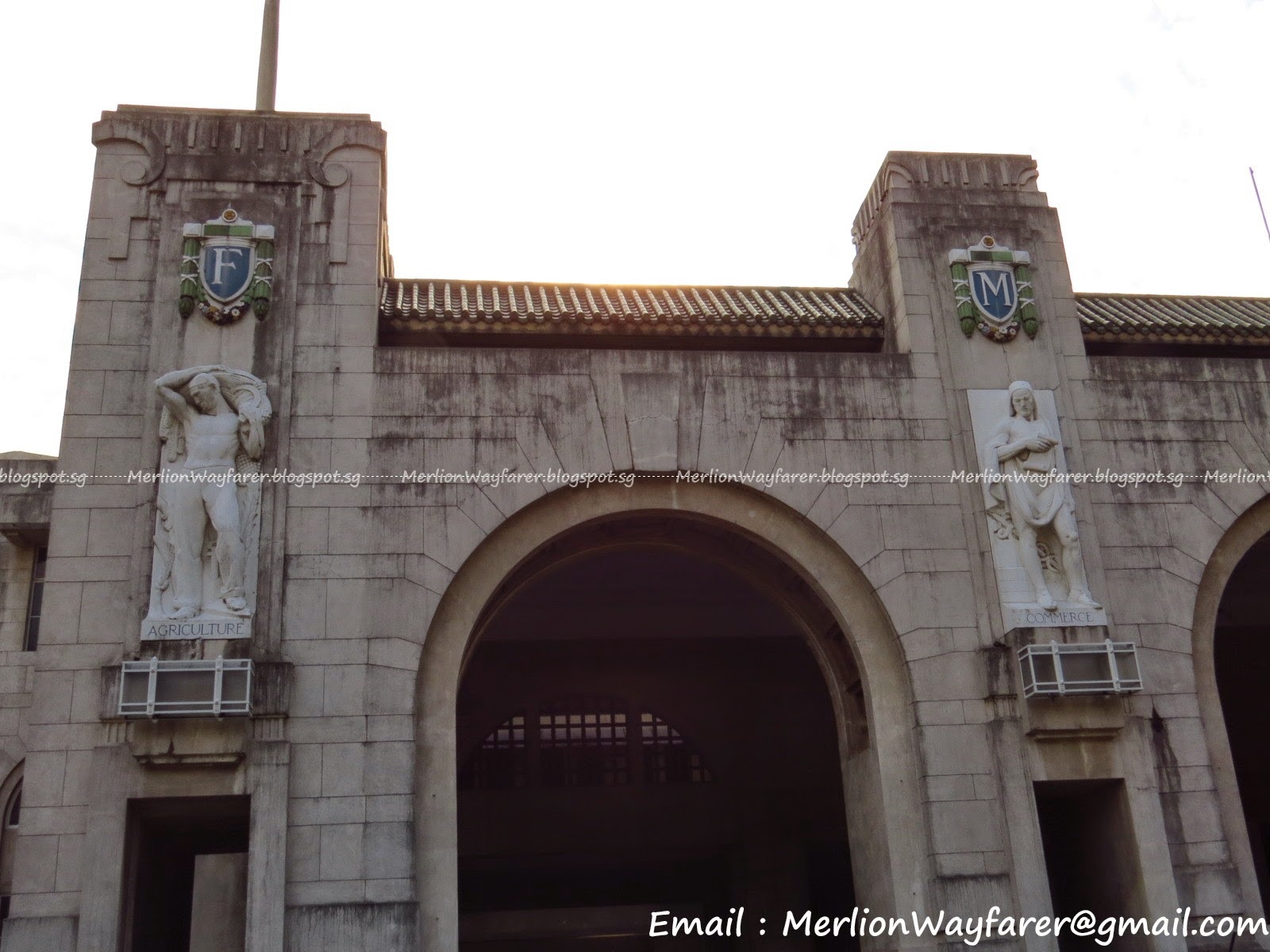Tanjong Pagar
South, Singapore
April 2015
Following an agreement between the governments of Malaysia and Singapore on 24 May 2010, railway operations at the Tanjong Pagar (Singapore) Railway Station ceased from 1 July 2011. It was gazetted in the same year as a national monument in recognition of its architectural and social significance.
The Singapore Land Authority (SLA) announced in February 2015 that the station would be open to the public on all public holidays, starting from the second day of the Chinese New Year. During Good Friday, more than 6,000 people visited Tanjong Pagar Railway Station yesterday when it opened its doors to the public. Merlion Wayfarer was one of them.
Opened on 2 May 1932 by then Governor of Singapore,Sir Cecil Clementi, the Tanjong Pagar (Singapore) Railway Station is a fine example of Modern Architecture with Neo-Classical and Art-Deco influences and, an integration of public art and local design motifs.

The original tracks are there, interlaced with the gravel that helped
absorbed the noise and vibration of the train...

The family of snails that did not survive the recent spate of hot weather...
South, Singapore
April 2015
Following an agreement between the governments of Malaysia and Singapore on 24 May 2010, railway operations at the Tanjong Pagar (Singapore) Railway Station ceased from 1 July 2011. It was gazetted in the same year as a national monument in recognition of its architectural and social significance.
The Singapore Land Authority (SLA) announced in February 2015 that the station would be open to the public on all public holidays, starting from the second day of the Chinese New Year. During Good Friday, more than 6,000 people visited Tanjong Pagar Railway Station yesterday when it opened its doors to the public. Merlion Wayfarer was one of them.
The signboards for the old food outlets are still around...
By the back gate and in from the side entrance, that's another way of entering the station...
Back In Time
Singapore was envisioned to be the starting and ending point of a rail network which would stretch West to Calais in France, North to Hankou in China and onwards to the Trans-Siberian network. This gave impetus to create a main railway station worthy of its role as a gateway to Asia.Opened on 2 May 1932 by then Governor of Singapore,Sir Cecil Clementi, the Tanjong Pagar (Singapore) Railway Station is a fine example of Modern Architecture with Neo-Classical and Art-Deco influences and, an integration of public art and local design motifs.
The Waiting Hall
The Station's key feature is the 21.6 m high vaulted space above the main waiting hall (equivalent to 3 storeys), creating an airy interior suitable for Singapore's tropical climate. Inside the main public hall, the walls bear panels with scenes depicting economic activities that were historically significant in Malaya: rice planting, rubber tapping, shipping activities, bullock cart transport, copra (coconut) growing and tin mining. These panels and the original floor slabs were manufactured locally, using rubber to deaden noise.On The Tracks...
As the day's visitors retraced the path of yesteryear's passengers, the tracks and platform was a hive of activity...
Enter the platform through these grilled iron gates.
In the afternoon sun, the patterns on these diamond-shaped grilles
cast a flickering shadow on the ceiling as the visitors pass by...

The original tracks are there, interlaced with the gravel that helped
absorbed the noise and vibration of the train...
Exhibiting curiousity over the fixtures,
many shutter bugs angle themselves to create unique angles for photos...
But then, maybe some are just waiting for some to shoot them...
Kids zipping by on their scooters with supervising parents afar,
oblivious to the danger posed to incoming people in front of them...
oblivious to the danger posed to incoming people in front of them...
Sometimes, the best position may be just to sit and watch all the action in front of you...
The station is left just as it is, with its weeds, darkened walls, and cracks on the floor
- unspoilt in its classic originality...
Spacious platforms now empty except for these visitors...
The passport clearing booths in the immigration section...
The office of the Ministry of Tourism & Culture (Malay: Kementerian Pelancongan)...
The Station can now be rented for private functions...
The next opening date...
The Exterior...
On the exterior of its front facade stand four reliefs of white marble representing the four sources of wealth of Singapore and Malaya - Agriculture, Commerce, Transport and Industry. They are works by Rudolfo Nolli.
Named after the then recently formed Federated Malay States in 1896 and founded five years after the formation of the federation, the company acquired various railways that were developed separately in various parts of Malaya, and oversaw the largest expansion and integration of the colonies' rail network encompassing the Federated Malay States, the Unfederated Malay States (except Trengganu) and the Straits Settlements, with lines spanning from Singapore to the south to Padang Besar (near the border with Siam) to the north.
Federated Malay States Railways (FMSR), the name of the railway operator running this line...
The family of snails that did not survive the recent spate of hot weather...
The front facade of the railway station amidst the bright blue sky
reflected off a car bonnet, with a Remembering LKY ribbon...
Amidst the glory of the past, life goes on...
Sources
- "6,000 people visit ex-railway station" (04 April 2015) by Carolyn KHEW. AsiaOne. Retrieved from http://news.asiaone.com/news/singapore/6000-people-visit-ex-railway-station.
- "Brief History of Railways in Singapore" (2011), Urban Redevelopment Authority. Retrieved from http://www.ura.gov.sg/railcorridor/history.html.
- "Federated Malay States Railways". Wikipedia. Retrieved from http://en.wikipedia.org/wiki/Federated_Malay_States_Railways (12 April 2015).
- "Former Tanjong Pagar Railway Station pulls in the crowds" (03 April 2015) by Carolyn KHEW. Straits Times. Retrieved from http://www.straitstimes.com/news/singapore/more-singapore-stories/story/former-tanjong-pagar-railway-station-pulls-the-crowds-20#1.
- "Tanjong Pagar railway station", Wikipedia. Retrieved from http://en.wikipedia.org/wiki/Tanjong_Pagar_railway_station (12 April 2015).











































